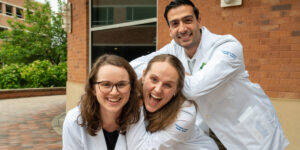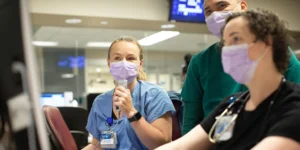Becoming an emergency medicine physician is a rewarding but challenging journey that requires dedication, hard work, and a passion for helping others. For medical students interested in pursuing a career in emergency medicine, the residency journey is a crucial step in gaining the knowledge, skills, and experience needed to excel in this fast-paced and dynamic field. In this comprehensive guide, we’ll explore the road to becoming an emergency medicine expert and provide an overview of the residency journey, including the application process, training requirements, and what to expect during residency.
1. Understanding Emergency Medicine Residency
Emergency medicine is a medical specialty focused on the diagnosis and treatment of acute illnesses and injuries that require immediate medical attention. Emergency medicine physicians work in hospital emergency departments, where they provide care to patients of all ages with a wide range of medical conditions, from minor injuries and illnesses to life-threatening emergencies.
2. Prerequisites for Emergency Medicine Residency
Before applying for emergency medicine residency, medical students must complete medical school and earn a Doctor of Medicine (MD) or Doctor of Osteopathic Medicine (DO) degree. Additionally, most emergency medicine residency programs require applicants to have completed a clinical rotation in emergency medicine during medical school.
3. The Application Process
The application process for emergency medicine residency typically begins in the fourth year of medical school. Here’s an overview of the steps involved:
- Research Programs: Research emergency medicine residency programs to find the ones that best match your interests, career goals, and preferences.
- Prepare Your Application: Prepare your residency application, which typically includes your medical school transcript, letters of recommendation, personal statement, and curriculum vitae (CV).
- Complete the Electronic Residency Application Service (ERAS) Application: Most emergency medicine residency programs participate in the Electronic Residency Application Service (ERAS), which allows you to submit your application online.
- Interviews: If selected, you will be invited to interview with residency programs. Be prepared to discuss your interest in emergency medicine, your career goals, and why you are interested in their program.
- Rank Programs: After completing your interviews, you will rank the residency programs in order of preference. Similarly, programs will rank applicants based on their interviews and qualifications.
4. Training During Emergency Medicine Residency
Emergency medicine residency is a three to four-year program that provides comprehensive training in the diagnosis and management of acute medical conditions and emergencies. Here’s what to expect during emergency medicine residency:
- Clinical Rotations: Residents complete clinical rotations in various areas of emergency medicine, including adult and pediatric emergency departments, trauma centers, critical care units, and medical specialty departments.
- Didactic Education: In addition to clinical experience, residents participate in didactic education, which includes lectures, conferences, case-based discussions, and simulation training.
- Procedures Training: Residents learn and practice a variety of medical procedures commonly performed in the emergency department, such as intubation, central line placement, lumbar puncture, and fracture reduction.
- Hands-On Experience: Residents gain hands-on experience caring for patients under the supervision of experienced emergency medicine physicians. They learn to assess and manage a wide range of medical conditions, from minor injuries and illnesses to life-threatening emergencies.
- Research and Scholarly Activity: Many emergency medicine residency programs require residents to complete research projects or scholarly activities during their training. This may include conducting clinical research, writing case reports, or presenting at medical conferences.
5. Certification and Licensure
After completing residency training, graduates are eligible to take the certification examination offered by the American Board of Emergency Medicine (ABEM) or the American Osteopathic Board of Emergency Medicine (AOBEM). Upon passing the examination, they become board-certified emergency medicine physicians.
In addition to board certification, emergency medicine physicians must obtain state licensure to practice medicine. Licensure requirements vary by state but typically include passing the United States Medical Licensing Examination (USMLE) or the Comprehensive Osteopathic Medical Licensing Examination (COMLEX), completing residency training, and meeting other state-specific requirements.
6. Career Opportunities
After completing residency training and obtaining board certification, emergency medicine physicians have a variety of career opportunities available to them. These may include:
- Working in hospital emergency departments
- Working in urgent care centers
- Providing medical oversight for emergency medical services (EMS) agencies
- Working in academic institutions as educators and researchers
- Pursuing fellowship training in areas such as critical care medicine, emergency ultrasound, or sports medicine
7. Conclusion
Becoming an emergency medicine expert is a challenging but rewarding journey that requires dedication, hard work, and a passion for helping others. Through comprehensive residency training, emergency medicine physicians gain the knowledge, skills, and experience needed to provide high-quality care to patients with acute medical conditions and emergencies. If you’re interested in pursuing a career in emergency medicine, carefully consider your options, research residency programs, and take the necessary steps to achieve your career goals. With the right training and preparation, you can make a meaningful difference in the lives of patients in need of immediate medical attention.




